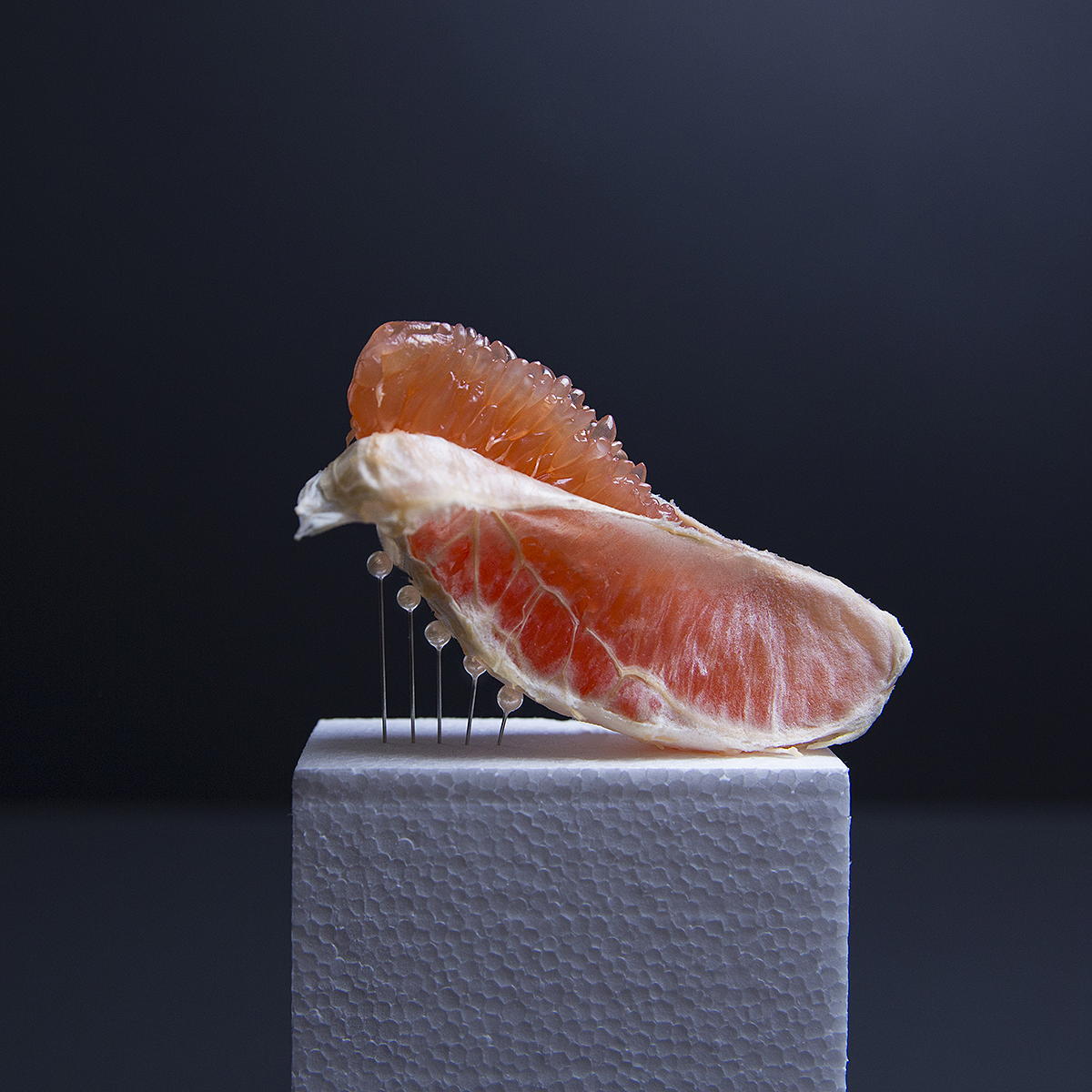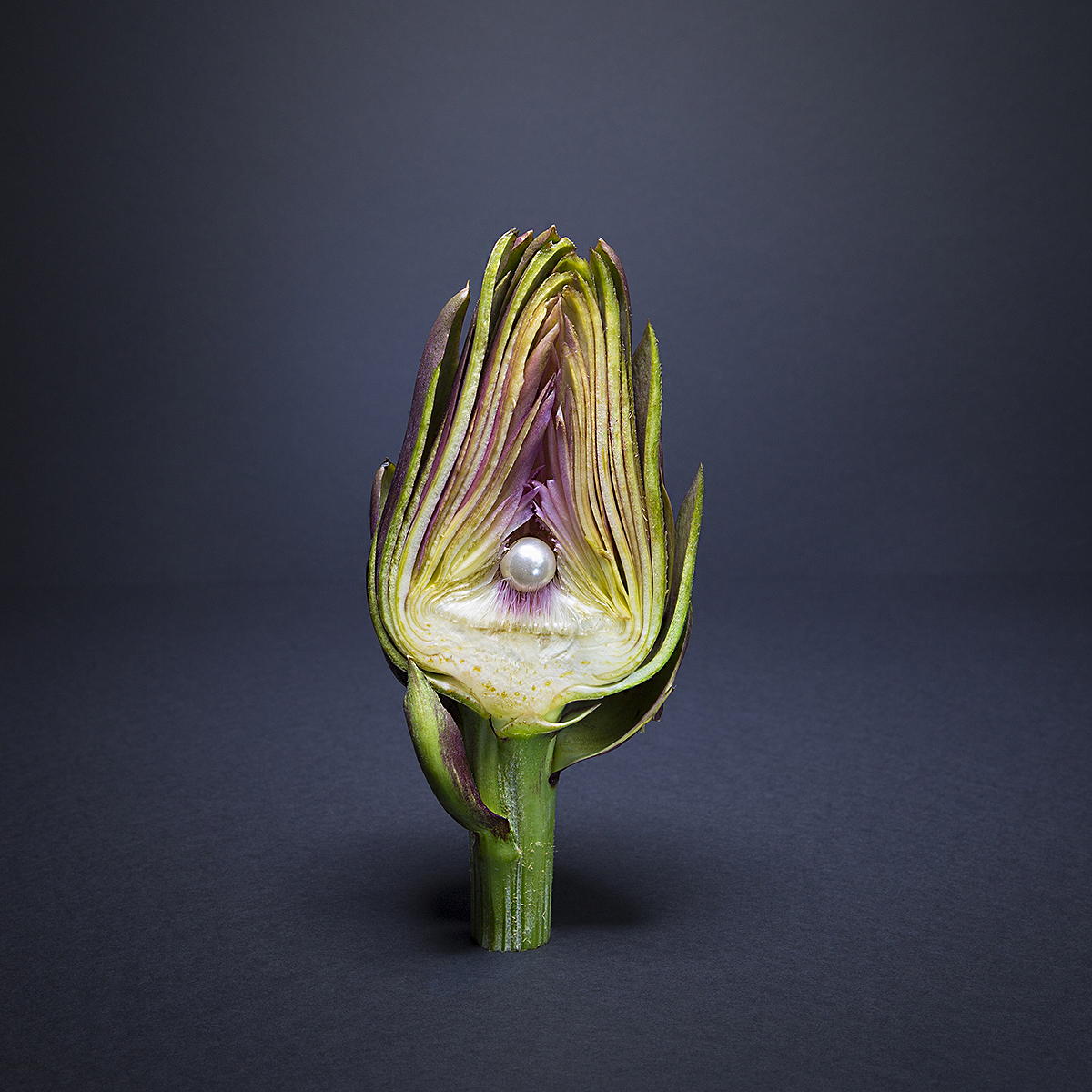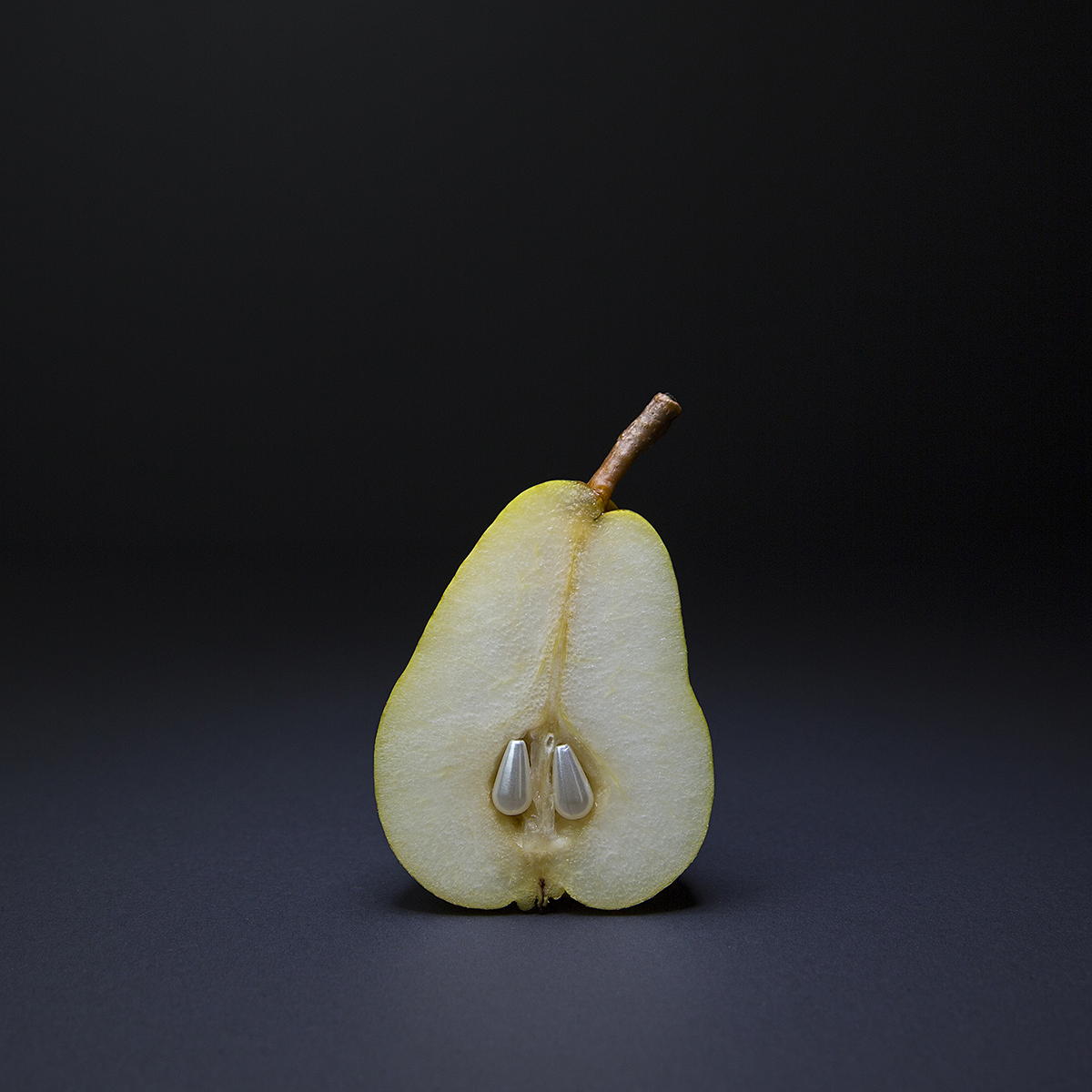
Forbidden Food and Beyond | An Artistic Exploration with Ana Straže
With a creative spirit that defies categorization, Ana Straže expresses her art through photography, embodying a unique relationship with the unknown. Join us in this conversation into the artist’s rich tapestry that shapes her distinct perspective on contemporary photography.
In a compelling exploration of the intersection between aesthetics, consciousness, and social awareness, we delve into the artistic realm of Ana Straže. Holding a master’s degree earned in 2013 from the Faculty of Natural Sciences and Engineering in Ljubljana, Ana specialized in Graphic and Interactive Communication, focusing her research on Photography in Contemporary Art. Ana, based in Celje, Slovenia, has garnered recognition nationally and internationally. Her work defies traditional genres, drawing inspiration from the contemporary world and revealing a captivating world of fiction in her series. As Luxiders Magazine we wanted to delve into Ana’s creative process in “Forbidden Food” and future projects, unveiling insights into her philosophies and the inspiration behind her visually arresting art.
Luxiders Magazine (L)
Ana Straže (AS)
L: Your series “Forbidden Food” has garnered attention, uniquely exploring the theme of food. What drew you to explore this subject, and how do you incorporate food into your artistic expression?
AS: The food is beautiful, but as we are lucky to have enough of it every day, we do not think about it. This is a pity. I am a vegetarian since I was 19 years old which at the time was not because of any belief (political, religion based,…) but rather because I simply did not like the taste and the smell of meat. Years later I also realized that eating meat – especially eating too much meat is not good either for the environment or myself (or for that sake any other human being). As we are bombarded in the last few years with global warming warnings, and we already feel the effect every year also in Slovenia, we should all be aware of food production – especially growing animals for human food is extremely harmful to the environment and is also very inefficient. If we as a humanity try to lower our meat consumption or even abandon it completely it will have a greater positive effect on our environment than if we completely electrify transport, heating and industry. This is also why I try to show the beauty of the food – also with the help of unusual elements that we would not otherwise find on our plates.
This should cover the social part of the project. Technical part of the Forbidden Food series, which is presented as a contemporary still life, explores the various ways everyday objects can be elevated to contemporary artworks. The idea was to research and experiment with completely common objects like fruits and vegetables.
Peeled grapefruit slices, sliced eggplants and other fruits and vegetables combined with small pins encrusted with pearls are the main tools to create this series. I discover materials and observe the best combinations with the details that fit together. Spontaneous manipulation always leads me to different and extremely interesting motifs, which sometimes resemble anything other than food. With joining and subtracting elements, I am trying to find different patterns and give them a new meaning while keeping in mind their essence is still being themselves.
L: What role do external elements, like pins and pearls, play in your series “Forbidden Food”?
AS: Pearls, which inspired me were selected as an item and appear continuously on each of the photos. They help expose and emphasize the beauty of food and also different shapes and food value, such as: emphasizing the structure of the epidermis, helping compositionally insert an object into a given space, complementing the food, adding a new perspective, etc.
Through this kind of transformation, fruit and vegetables become attractive sculptures, which would entice people to eat more of it.
L: Can you elaborate on how this series serves as an extension of your previous work, ‘Garden of Eden,’ and how it contributes to your broader artistic exploration?” Additionally, how does the series contribute to your broader artistic goals and perspective on the role of natural elements in art?”
AS: The Forbidden Food series is the continuation of the original series called The Garden of Eden. It is connected to the Old Testament’s women principal in the Garden of Eden and the consequent expulsion from it. The exposed part is nakedness, which can be seen as a state of sacredness (nothing is concealed), purity and liberty on one side, and on the other, it can represent a field of moral questions and taboos… However, everything in this series relates to the freedom of expression. Changes and exile in Eden happened when the forbidden fruit was eaten. At this point, the Garden of Eden series ends, and a new chapter begins with the Forbidden Food series (in 2019).
The Garden of Eden consists of basic elements, as the aim was to show the natural beauty in its purest form. We think of Eden as the perfect place where people and nature coexist in harmony.
There is no life for humans if there is no food, if we continue the way we behave right now there will be no more humans on Earth. So, it is actually not a choice that we have, but rather a necessity. But the beauty we like – it seems we have this embedded in our minds and bodies, therefore I try to use the beauty to help reach the goal – which in the end could be like the Garden of Eden.


L: Can you delve into how you navigate the delicate balance between aesthetics and the exploration of simple everyday things in this series?
AS: The basis of my creation is a wish for visual presentation of things that I feel and things that I think about. Through a contemporary way, I want to capture food in a unique approach with a slight sensual touch. With the Forbidden Food series, I’m trying to discover the limits of aesthetics and notice the importance of simple everyday things. I often notice that it is very challenging to create some special art form, from a simple, everyday object, such as an apple, banana, and eggplant.
Aesthetics play a key role in my life. Not only the art I do, but also in everything else. I feel like I was born with this, I do not think about it at all, rather I think it is embedded in whatever I do. It is quite hard to explain, but until something feels right in terms of aesthetics, I reiterate until I am satisfied.
L: What drew you to photography rather than other artistic forms? Can you describe your journey as a photographer?
AS: You could say I come from an artistic family (academic and hobby painters) – which probably also affected my decision to be active in artistic fields. When I was a child, I liked to draw quite a lot, but as I grew up and went to University I started with photography as a hobby, which took more and more time.
I received a master’s degree on the theme of photography in contemporary art from the Faculty of Natural Sciences and Engineering in Ljubljana in 2013, majoring in Graphic and Interactive Communication.
I was also fascinated when I encountered contemporary photography and discovered some big names and their artworks, such as Parr, Sherman, Gursky, Araki… That was undoubtedly a very inspiring period for me. And I also think that the stories I am trying to tell are best served by photography.
In 2009, I began to take part in photography competitions, receiving both local and international awards. Between 2013 and 2023, I presented photographic projects in several groups and solo exhibitions.
In recent years, my photographs have been featured in international photographic, fashion, design and art magazines, as well as digital platforms.
My work from the Garden of Eden series is included in the permanent collection of the Center for Contemporary Arts in Celje, Slovenia.
L: Are there aspects of your surroundings that consistently find their way into your photography? How do you choose your subjects?
AS: I present artistic expression through photography by including unique relation to the unknown and by doing so I do not wish to limit myself to various genres and subjects; however, my work is based on current inspiration. In individual series, a world of fiction can be found, presenting the challenged reflection of everyday life. My subjects are simple, which proves the sole way of presenting the idea to the observer. The subjects are ambiguous, should they be surprising, unusual, or ordinary, I enable the observer to create their own interpretation and their own stream of thoughts.
At the beginning of creating a new photo series I try not to think too much of the previous projects – at least this is what I think. During the setup I usually realize that the work is almost always somehow connected to previous projects. I do not think I can explain this in words – it is just like that.



L: In your artistic creations, there appears to be a dynamic interplay between elements of reality and fiction. Can you elaborate on how you navigate and balance these two aspects within your work? How do you see this interplay contributing to the themes or narratives you aim to convey?
AS: The question reminds me of this phrase “Reality and fiction are two separate worlds, but they inevitably feed each other.” What is reality or fiction? Is a dream a fiction? I feel very involved in my dreams – they seem to me as a reality. There is a term in physics “quantum reality” – which I find very interesting – is this reality or is it a reality in some cases.
L: Can you describe the creative process in your new series ‘I C E B E R G’? Why did you decide to explore the repercussions of global warming and the overabundance of plastic waste? How does it delve into the interplay between the conscious and unconscious mind?
AS: The ICEBERG series talks about the consequences of global warming and excessive pollution with plastic waste and at the same time the conscious versus unconscious mind. This is the first project where I consciously began to warn and raise awareness about excessive pollution through art. I believe that art and the artist himself/herself, through various actions, can significantly contribute to the general awareness of the consequences of our actions.
An aesthetically perfect image, in which we see a seductive female body, in the next moment swings us to the level of discomfort, in association with current ecological issues, such as the consequences of global warming and excessive pollution (of water) with plastic waste. When the composition requires a female body, I usually take on this role myself through posing and artistic composition, with digital image processing I try to approach the aesthetics of graphic design and the challenges of the language of visual messages. The nakedness of the body can also be understood and read as a synonym for the fragility of the natural balance of our planet.
You probably know Freud’s theory of the mind: Only a fragment of our ideas and feelings are conscious or “visible” to us, while the vast bulk of our mental content is unconscious or “invisible” to everyday introspection.
We spend a lot of time in an unconscious state. It is not just when sleeping – besides the conscious mind when we are awake, there are quite a lot of unconscious in parallel (think about the times you “daydream” or your thoughts wander, …). One could argue the latter is predominant – and so we come to the Iceberg project. Most of it is hidden under the water. Also, plastics we can see are by far not the only one or the one we have most problems with – think of microplastics and how it affects everyone.
Some of the most beautiful things in nature are disappearing before our eyes – quietly. And we come to global warming Again.
L: Looking ahead, are there specific themes or projects you aspire to explore in your future work?
AS: The projects, at least most of them, are not planned. They happen. When they happen, I cannot tell. Sometimes it takes a lot of time of nothing (in terms of art) – then suddenly something hits me, and I cannot stop thinking/arranging/trying out until the complete story is just right. It is only later that I actually can connect the aesthetics with the topic, which unconsciously troubles me.
At the moment I’m working on some new rather complex ideas, where organic and inorganic elements will play a major role. But I’m still thinking about the best way to do it.
In any case, I also want to explore the topic of excessive pollution, and through the web of coincidences that will take place at that time, create a new series in this area.


Interview:
Francesco Witt
Luxiders Magazine








